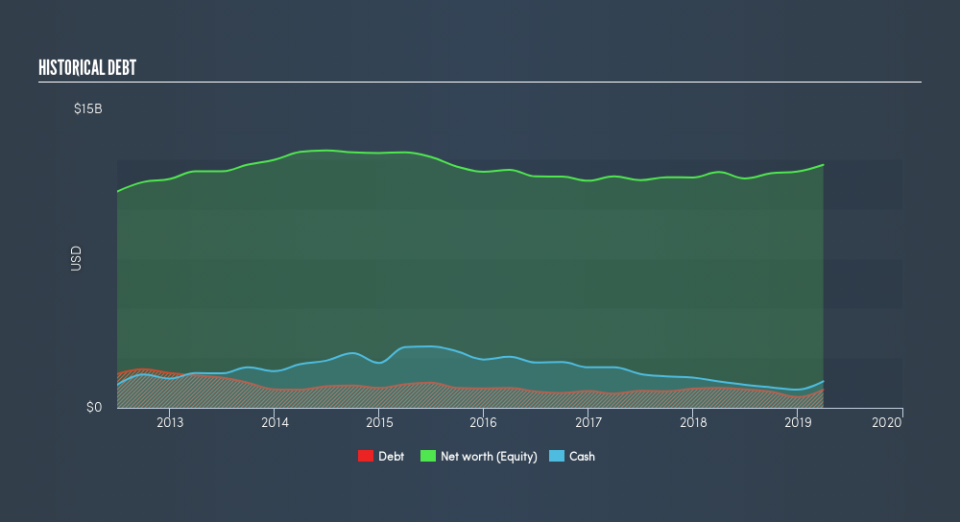All You Need To Know About Tenaris S.A.'s (BIT:TEN) Financial Health

Want to participate in a short research study? Help shape the future of investing tools and you could win a $250 gift card!
Tenaris S.A. (BIT:TEN), a large-cap worth €13b, comes to mind for investors seeking a strong and reliable stock investment. Most investors favour these big stocks due to their strong balance sheet and high market liquidity, meaning there are an abundance of stock in the public market available for trading. In times of low liquidity in the market, these firms won’t be left high and dry. They are also relatively unaffected by increases in interest rates. Today I will analyse the latest financial data for TEN to determine is solvency and liquidity and whether the stock is a sound investment.
Check out our latest analysis for Tenaris
TEN’s Debt (And Cash Flows)
Over the past year, TEN has reduced its debt from US$1.0b to US$911m , which includes long-term debt. With this debt repayment, the current cash and short-term investment levels stands at US$1.3b , ready to be used for running the business. Moreover, TEN has produced US$1.2b in operating cash flow during the same period of time, leading to an operating cash to total debt ratio of 130%, signalling that TEN’s debt is appropriately covered by operating cash.
Does TEN’s liquid assets cover its short-term commitments?
With current liabilities at US$1.8b, the company has been able to meet these commitments with a current assets level of US$5.6b, leading to a 3.13x current account ratio. The current ratio is the number you get when you divide current assets by current liabilities. However, a ratio above 3x may be considered excessive by some investors, yet this is not usually a major negative for a company.
Is TEN’s debt level acceptable?
Debt-to-equity ratio standards differ between industries, as some are more capital-intensive than others, meaning they need more capital to carry out core operations. A ratio below 40% for large-cap stocks is considered as financially healthy, as a rule of thumb. With debt at 7.5% of equity, TEN may be thought of as having low leverage. This range is considered safe as TEN is not taking on too much debt obligation, which may be constraining for future growth.
Next Steps:
TEN’s high cash coverage and low debt levels indicate its ability to utilise its borrowings efficiently in order to generate ample cash flow. In addition to this, the company exhibits proper management of current assets and upcoming liabilities. This is only a rough assessment of financial health, and I'm sure TEN has company-specific issues impacting its capital structure decisions. I suggest you continue to research Tenaris to get a more holistic view of the stock by looking at:
Future Outlook: What are well-informed industry analysts predicting for TEN’s future growth? Take a look at our free research report of analyst consensus for TEN’s outlook.
Valuation: What is TEN worth today? Is the stock undervalued, even when its growth outlook is factored into its intrinsic value? The intrinsic value infographic in our free research report helps visualize whether TEN is currently mispriced by the market.
Other High-Performing Stocks: Are there other stocks that provide better prospects with proven track records? Explore our free list of these great stocks here.
We aim to bring you long-term focused research analysis driven by fundamental data. Note that our analysis may not factor in the latest price-sensitive company announcements or qualitative material.
If you spot an error that warrants correction, please contact the editor at editorial-team@simplywallst.com. This article by Simply Wall St is general in nature. It does not constitute a recommendation to buy or sell any stock, and does not take account of your objectives, or your financial situation. Simply Wall St has no position in the stocks mentioned. Thank you for reading.

